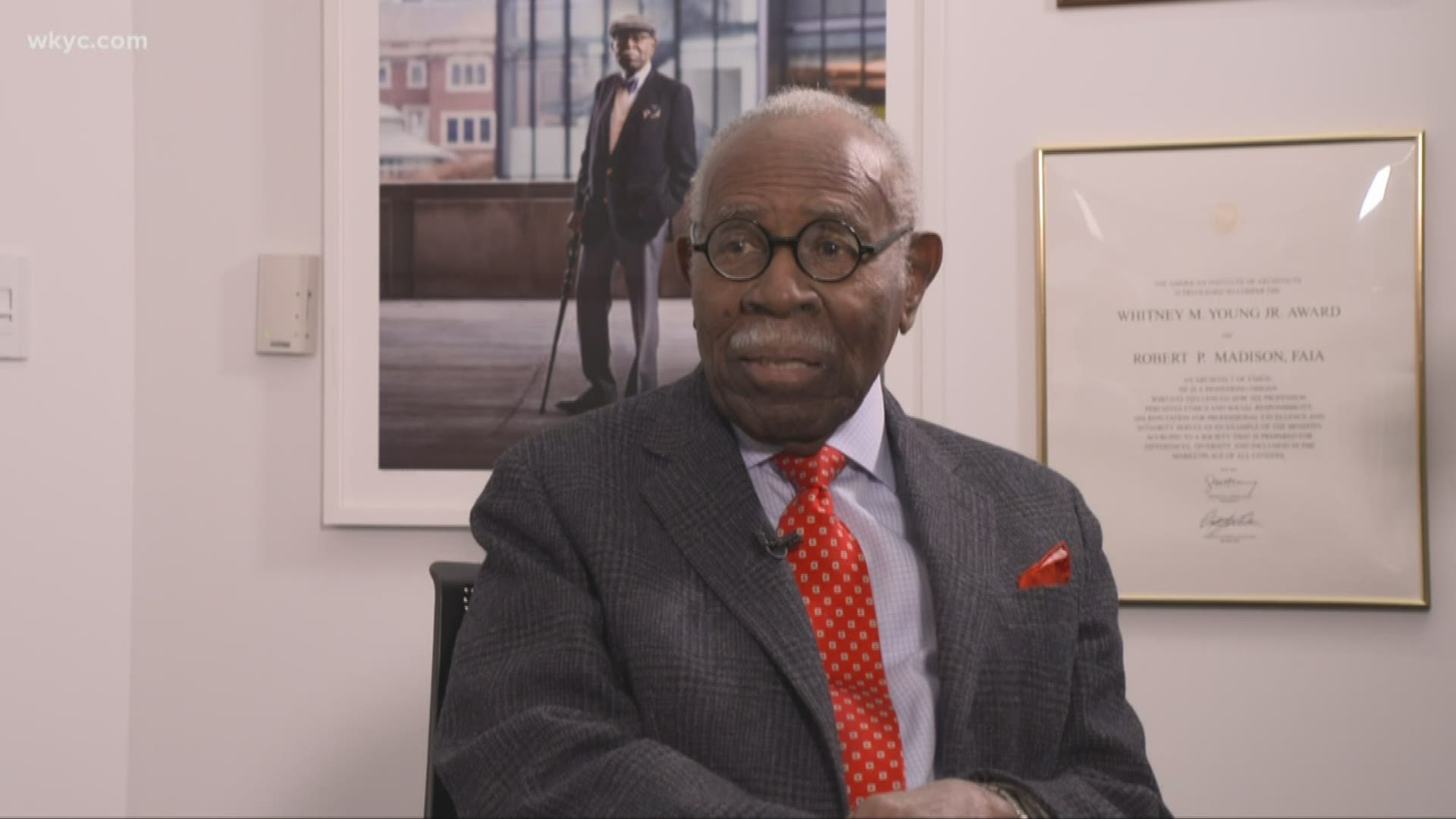CLEVELAND — Whether Robert Madison is looking at lines drawn on a computer screen or those penciled in on a sheet of paper, he is thinking one word: “architecture.”
Cleveland’s Robert Madison is steeped in architecture.
Even in retirement, he offers thoughts to those working the profession who look to lay in the drawing before any building's concrete is laid in or steel foundation riveted into place.
Madison was inspired by his mother “Nettie” who watched him pencil a line across a paper. That was in 1929.
“If Mother said so, that’s the way it’s going to be. That’s how I became an architect,” Madison said.
But there was much to overcome for the man from Cleveland.
When Madison entered Howard University in Washington D.C., architecture was the goal downrange. But then World War II exploded into his life and Army Lieutenant Madison went to war, serving in its then racially segregated units.
It was a time black troops demanded they, too, be involved in the heat of battle.
“The NAACP said, ‘They will fight because when they come back, they can demand whatever they need. Because they have paid a price.’ That’s why I went to battle in World War II,” he said.
Madison was wounded in Italy and was awarded The Purple Heart as well as other combat medals. After the war, he came home to face more challenges. In 1946, Western Reserve University initially refused him entry into its architecture school because he was black.
"There will never be a black architect," said a university dean. So Madison put on his old World War II uniform again and in uniform told the dean, "This country owes me."
In the early 1950s, he graduated, becoming the first black certified Ohio architect, only the 10th in the U.S.
“The challenge was there, but the success of meeting the challenge was what inspired me to say, ‘Well, you can do it.’”
In the early days, it was not easy eking out a living as an architect. But times began to change as Madison made his mark nationwide and beyond: architect for one of the concourses at Cleveland Hopkins Airport, college buildings throughout Cleveland, Associate Architect on the Rock and Roll Hall of Fame, Cleveland Browns Stadium and many dozen more.
The Robert P. Madison architectural firm, which he founded decades ago, continues. Madison, age 96, retired only four years ago. But the firm continues. Sandra Madison and her husband, Kevin – Madison's nephew – are part of the new ownership.
“Everyday his handprint is here. We want to keep the legacy of his and what he’s done and the reason why we are here,” said Sandra Madison, CEO of Robert P. Madison International.
“He inspires us. It was never anything but by design excellence,” echoed Robert Klann, C.F.O. of Robert P. Madison International.
Bob Madison is proud of every building he ever designed and constructed, including the Cleveland State office tower. But this building was a challenge. Because of the rail lines of the RTA below the street, the building had to be constructed on pillars.
But one Madison-designed building is of major international note. On the African continent, the U.S. Embassy office building in Dakar, Senegal. The U.S. offered Madison the contract to build its embassy in the country from where Madison's ancestors were first enslaved and brought to the United States. Robert P. Madison, an American story.
“I’ve been blessed. The Lord has been good to me. I really have been blessed,” Madison said.
More from Leon Bibb:

